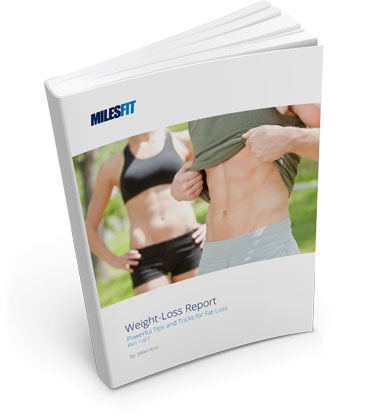“What this means is that through HIIT, not only can you increase your cardiovascular endurance even more effectively than steady state cardio training (like going for a 5 km jog, for example), but you can also increase your muscle endurance and lean muscle mass.”
By Holly, Milesfit Trainer
These days, the term HIIT is being thrown around a lot, inside and outside of the gym environment. We often hear people talk about HIIT cardio or how HIIT can help you lose weight, but what is it really, and why is it so effective for fat loss and increased endurance when properly used?
While you may have frequently heard this term, you may not know that HIIT actually stands for High Intensity Interval Training. Simply put, this means training by alternating through cycles of intense bursts of activity at maximum heartrate, with cycles of rest in-between.
So now that we understand what HITT is, why is it beneficial? While it has been known to have many different advantages for the body, some of the key benefits include increased cardiovascular health, fat loss, and increased muscle endurance. Depending on your own personal goals, and which benefits of HIIT you would like to focus on, there are many different ways to use high intensity interval training. One of the most popular ways to train is what is widely known as the Tabata Method.
Dr. Tabata was a Japanese research scientist who worked with the National speedskating team of Japan. His hypothesis was that he could have athletes increase their anaerobic system (muscle endurance and muscle mass), as well as their aerobic system (cardiovascular endurance) in just 4 minutes. The athletes were required to train cycling between 20 seconds of intense activity, followed by 10 seconds rest (2:1 ratio) for the duration of the 4 minutes.
What he found was this: athletes who used the Tabata Method, in comparison to the control group, who trained at a steady intensity of cardio for 1 hour, more effectively increased not only their aerobic system using Tabata's method. But also showed increases in the anaerobic system, where the control group showed no difference in results.
What this means is that through HIIT, not only can you increase your cardiovascular endurance even more effectively than steady state cardio training (like going for a 5 km jog, for example), but you can also increase your muscle endurance and lean muscle mass. Which would not occur by using steady state training. The best part of all this? It only took a minimum of 4 minutes per day, 5 days per week to show results!
Nevertheless, it is important to note that while the Tabata Method is quick and easy to employ, and has been proven to show results for increasing your cardiovascular health, some recent studies suggest that a 2:1 ratio between activity and rest may not be the most effective method for weight-loss.
Weight-loss occurs during HIIT when the body enters a certain state of fatigue, and it starts to burn fat and glycogen that is stored in the muscle to refuel its energy. This only happens and is most effective when, during these intervals of activity, you are giving the closest to 100% of your energy that you can. Therefore, the problem with using the Tabata method, or a 1:1 ratio (example: 30 seconds of activity, 30 seconds of rest) becomes that in order to reach the closest to 100% of your maximum heartrate as possible each time you repeat the activity, 30 seconds of rest may not be a long enough recuperation time.
Why is this an issue? Well, if you do not take enough time to decrease your heartrate between intervals then you are training at a high heartrate steady state, and as we learnt earlier, though steady state training may show some increases in cardiovascular abilities, it isn't optimal to increase muscle endurance, nor to induce fat-loss.
Hence, the most effective way to lose weight and build lean muscle-mass using HIIT, would be to use something like a 1:2 (30 seconds of activity with 1 minute of rest), 1:3 (30 seconds of activity with 1 minute 30 seconds of rest), or even 1:4 ratio, with as much as 2 minutes rest between intervals, depending on your body's ability to recuperate between intervals.
Here is a list of exercises that are optimal for increasing the heartrate quickly and are great tools for HIIT:
- Battles Ropes
- Medicine Ball Slams
- Sprints
- Burpees
- Mountain Climbers
- Skipping Rope
- Speed Squats
- Jump Squats
- Rowing
- Cycling
And many, many more!
HIIT can offer many benefits to the body, and can be performed in such a short amount of time. Not only can HIIT be done anywhere, but it is also great way to add variety to your training, and there is simply no excuse for not prioritizing potentially 4-15 minutes of your day to do it!
So whether your goal is to run a marathon, shed a few pounds, or simply to become a healthier you, HIIT is a quick, efficient and effective way to meet your fitness goals!
Milesfit - Montreal Personal Training - One-stop-shop for health and fitness in the Monkland Village in NDG.
Contact us for more info on how we can help you achieve your health and fitness goals!
438-834-8869

